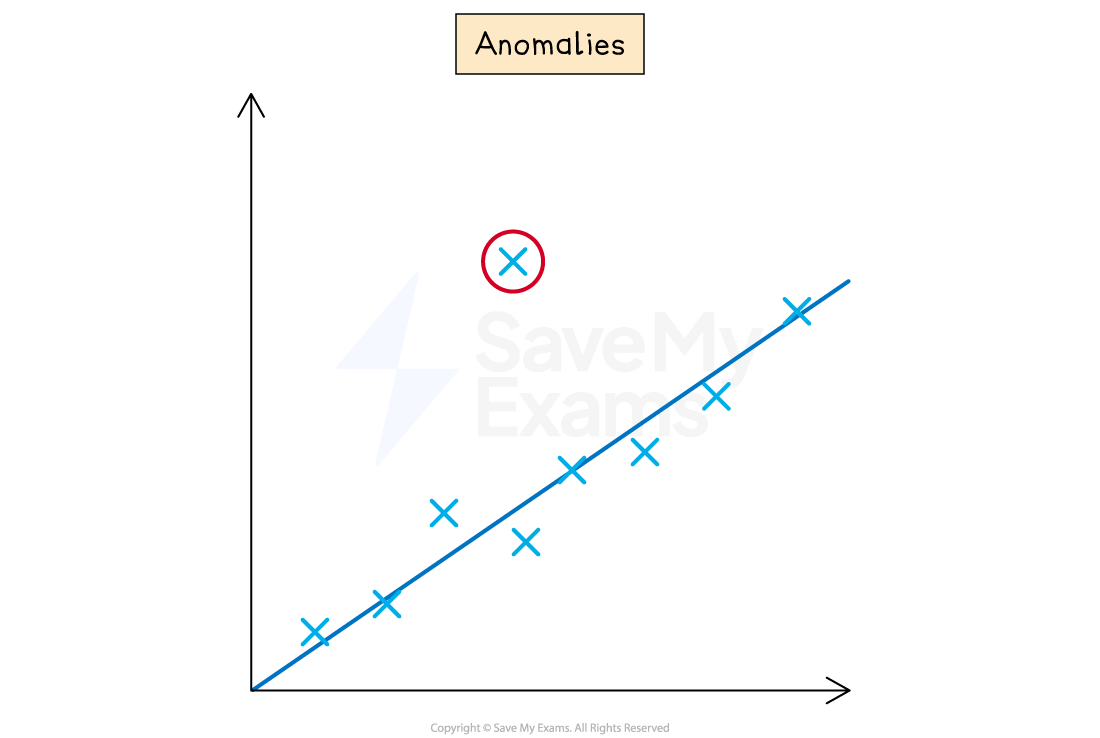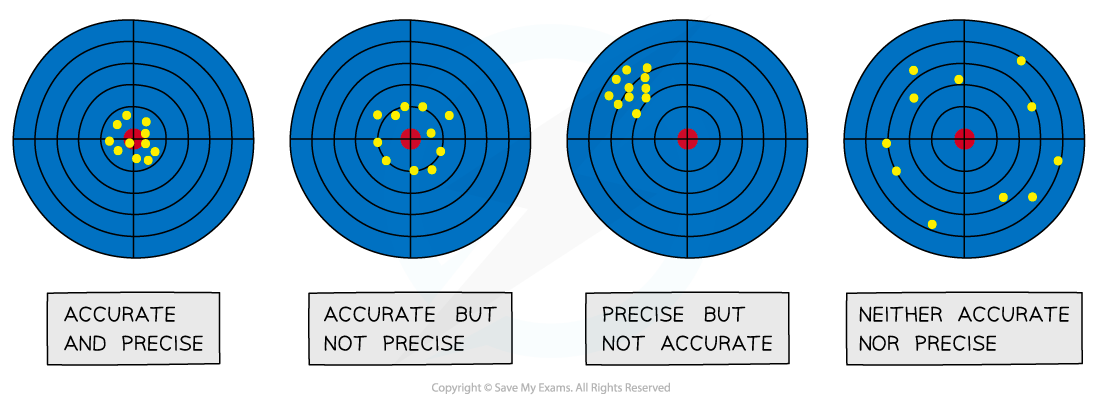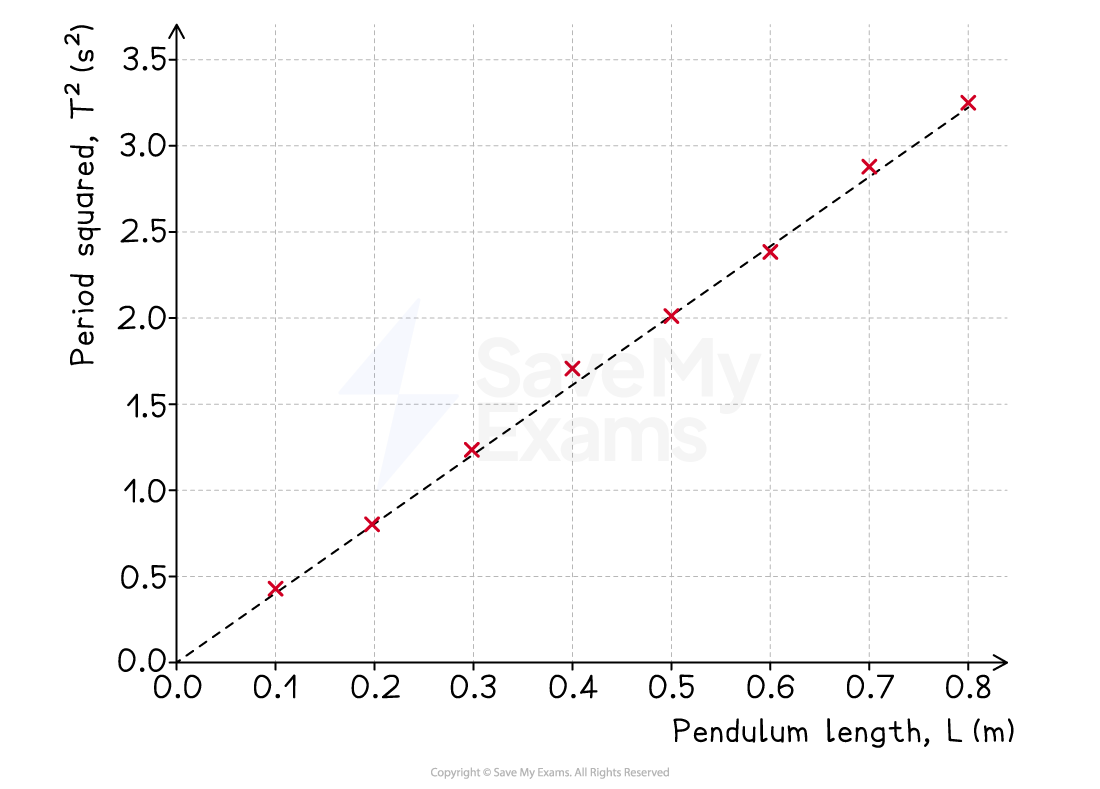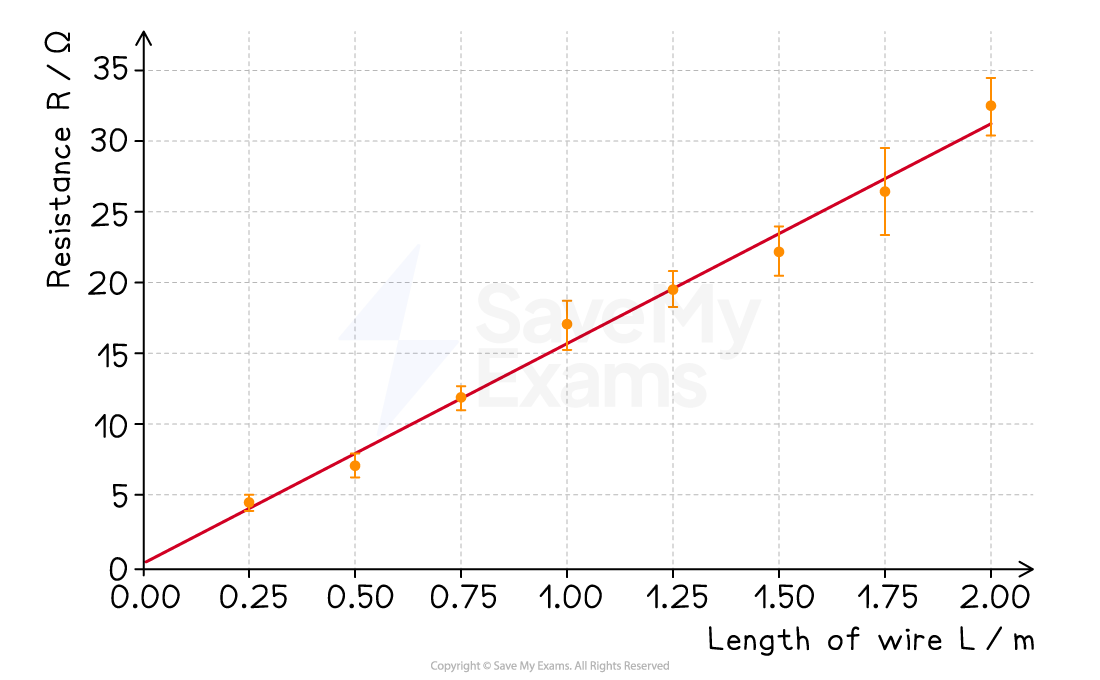Interpreting results in Physics (DP IB Physics): Revision Note
Interpreting results in Physics
This is the "sense-making" phase of your investigation, where you analyse your processed data to find patterns, trends, and relationships
The primary goal is to determine what your results are telling you so that you can answer your research question
This almost always involves creating a graph to visualise the relationship between your independent and dependent variables
Principles of interpretation
Interpret qualitative and quantitative data
Your qualitative observations are crucial evidence to help explain your quantitative results.
For example:
Your calculated value for the resistivity of a wire is higher than the accepted data booklet value
Your qualitative observation that "the wire felt warm to the touch after several measurements" is the perfect piece of evidence to explain why
The heating effect of the current increased the temperature of the wire, which in turn increased its resistance, leading to a higher calculated resistivity
Interpret diagrams, graphs and charts
Once a line of best fit is drawn, the following features of the graph may provide important information:
The gradient (slope):
This can represent a key physical quantity
For a graph of
vs.
for an ohmic resistor, the gradient is the reciprocal of the resistance
The y-intercept:
This shows the value of the dependent variable when the independent variable is zero
It can often reveal systematic errors, like a zero error on a sensor
The area under the curve:
This can represent a total quantity, such as the displacement from a velocity-time graph or the work done from a force-distance graph
Error bars:
The size of your error bars gives a visual representation of the precision of your data
Large error bars suggest significant random error
If the line of best fit passes through the error bars of all points, it indicates a good fit
Identify, describe, and explain patterns and trends
Once you have your graph, you must interpret it
This is a two-step process:
Describe the trend:
State what the graph shows
Use key scientific terms like:
directly proportional
linear positive correlation
inversely proportional
exponential increase
Explain the trend:
You must use your knowledge of physical principles and equations to explain why the data follows this trend
This is the most important part of the interpretation
Identify and justify anomalous results
An anomalous result, or outlier, is a data point that clearly does not fit the overall trend
You should highlight obvious anomalous results on your final graph

In your analysis, you must justify why it is an anomalous result
A good justification links the anomalous result to a likely experimental error
For example:
The result from trial 2 at 60°C was excluded from the average and the graph as it was significantly higher than the other two trials
This was likely caused by a random error, such as a delay in starting the stopwatch
Assess accuracy, precision, reliability and validity
These terms have very specific scientific meanings
Using them correctly in your interpretation shows a high level of understanding
Accuracy:
How close your final result is to the accepted or true value
You can only comment on accuracy if a literature value is available for comparison
Accuracy can be increased by repeating measurements and calculating an average
Repeating measurements also helps to identify anomalies that can be omitted from the final results
Accuracy is affected by systematic errors
If the systematic error in a measurement is small, then that measurement can be said to be accurate
Precision:
How close your repeat measurements are to each other
If a measurement is repeated several times, it can be described as precise when the values are very similar to, or the same as, each other
A small spread in your data indicates high precision
Precision is affected by random errors
If the random error in a measurement is small, then that measurement can be said to be precise

Reliability:
This refers to the consistency of your results
A reliable experiment is one which produces consistent results when repeated many times
Similarly, a reliable measurement is one which can be reproduced consistently when measured repeatedly
When thinking about the reliability of an experiment, a good question to ask is
Would similar conclusions be reached if someone repeated this experiment?
Validity:
This relates to your experimental method and the appropriate choice of variables
Your results are valid if your experiment was a fair test, meaning you successfully controlled all other significant variables
Any variables that may affect the outcome of an experiment must be identified and controlled in order for the results to be valid
For example, when using Charles’ law to determine absolute zero, pressure must be kept constant
When thinking about the validity of an experiment, a good question to ask is
How relevant is this experiment to my original research question?
Worked Example
Research question:
"What is the relationship between the length of a simple pendulum and its period of oscillation?"
Graph:
After processing the data, a graph of square of the period
/ s2 (y-axis) against length
/ m (x-axis) is plotted

Interpretation:
Description of trend:
The graph of
vs.
shows a clear positive linear correlation
The line of best fit is a straight line that passes through the origin, which indicates that
is directly proportional to
Explanation of trend:
This result is consistent with the theoretical pendulum equation,
, which when rearranged, gives
This equation is in the form
, confirming the directly proportional relationship between
and
Using the gradient:
The gradient of the graph was calculated to be 4.05 s2 m-1
Using the relationship gradient =
, the experimental value for the acceleration due to gravity was found to be
= 9.76 m s-2
This is very close to the accepted value of 9.81 m s-2, with a percentage error of only 0.5%, suggesting the data is highly accurate
Worked Example
Research question:
"What is the relationship between the length of a constantan wire and its electrical resistance?"
Graph:
After processing the data, a graph of resistance
/ Ω (y-axis) against length
/ m (x-axis) is plotted

Processed data:
The average diameter of the wire was calculated as 0.19 mm
Interpretation:
Precision and reliability:
The error bars for the resistance values are small, indicating that the measurements of voltage and current were precise
The data points all lie very close to the line of best fit, suggesting the relationship is strong and the results are reliable
Accuracy:
The y-intercept of the graph is +0.25 Ω
Theoretically, a wire of zero length should have zero resistance, so the line should pass through the origin
This non-zero intercept suggests the presence of a small systematic error, such as contact resistance from the crocodile clips, which adds a small amount of extra resistance to all measurements
The gradient of the graph is 15.54 Ω m-1
Using the relationship
with
= 2.84 × 10-8 m2, the experimental value for the resistivity of constantan wire was found to be
= 4.41 × 10-7 Ω m
A literature search shows that the resistivity of constantan wire is 4.94 × 10-7 Ω m
The result is very close to the accepted value, suggesting that the result is accurate
Examiner Tips and Tricks
Explain the physics.
The most important part of your interpretation is linking the trend in your graph back to the relevant physical theory and equations.
This moves your analysis from a simple description to a scientific explanation.
Stay focused on your research question.
Remember: the ultimate goal of interpreting results is to test your hypothesis and answer your research question.
Keep circling back to this in your analysis.
Highlight anomalies transparently.
Never delete data without comment.
Mark and explain anomalous points, and use physics reasoning (not just “it looks odd”) to justify your decision.
Use the key vocabulary.
Explicitly use the terms accuracy, precision, and reliability in your interpretation.
This clearly demonstrates to the examiner that you understand the quality of your results.

Unlock more, it's free!
Did this page help you?